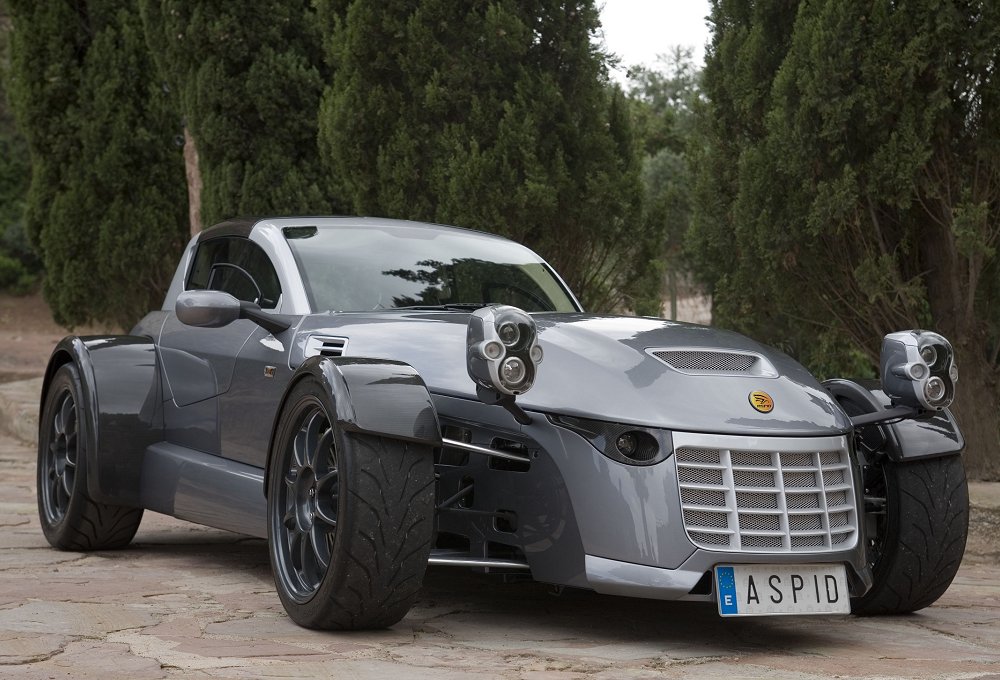In the summer of 2008, as major manufacturers showcased their latest supercars at the British Motor Show, a small Spanish company called IFR Automotive quietly unveiled something extraordinary. The Aspid Sport didn’t just challenge conventional sports car wisdom—it completely rewrote the rulebook with its radical approach to performance engineering.
When other manufacturers were adding power to overcome weight, IFR Automotive chose a different path. They embraced Colin Chapman’s famous philosophy of “simplify, then add lightness” and took it to unprecedented extremes. The result was a 700kg marvel that would redefine what was possible in a road-legal sports car.
Fact!
The Aspid Sport achieved one of the highest power-to-weight ratios of any road-legal car in 2008, surpassing several contemporary supercars.
Engineering Marvel: The Power-to-Weight Philosophy
At the heart of Aspid Sport’s revolutionary design lies an obsession with weight reduction. Every component underwent rigorous optimization, resulting in a chassis that combines aluminum and carbon fiber in ways that were groundbreaking for 2008. The engineering team prioritized structural rigidity without compromising the target weight of 700kg—a feat that seemed impossible at the time.
This fanatical attention to mass reduction extended to every aspect of the vehicle. Even the fasteners and mounting points were optimized for weight savings while maintaining structural integrity.
“What IFR achieved with the Aspid’s chassis design was nothing short of revolutionary. They proved that extreme performance and structural integrity weren’t mutually exclusive with ultra-lightweight construction.” — James Matthews, Advanced Materials Engineer at Performance Tech Solutions
The chassis design incorporated advanced aerodynamic principles, with every surface and curve serving a specific purpose. The result was a car that remained planted at high speeds while maintaining its incredibly low mass.
Important!
The Aspid Sport's chassis achieved torsional rigidity comparable to Formula 1 cars of its era while weighing less than half of most contemporary sports cars.
Heart of the Beast: Honda’s High-Revving Legacy
The decision to use Honda’s legendary F20C engine wasn’t just about sourcing a reliable powerplant—it was about finding the perfect partner for the lightweight chassis. The 2.0-liter inline-four engine, famous for its 9,000 RPM redline, underwent extensive modification to match Aspid’s performance targets.
In its base Sport configuration, the engine produced 270 horsepower—already an impressive figure. But it was the Supersport variant that truly showcased the platform’s potential, with forced induction pushing output to 400 horsepower.
Key performance considerations that influenced engine development:
- maximum power-to-weight optimization;
- linear power delivery across the rev range;
- reliability under high-stress track conditions;
- thermal management in a lightweight package;
- balanced weight distribution.
This combination of ultra-low weight and high-revving power resulted in acceleration figures that seemed impossible: 0-62 mph in just 2.8 seconds—supercar territory from a four-cylinder engine.
Design Language: Where Past Meets Future
The Aspid Sport’s aesthetic represents a unique fusion of classic racing car proportions and modern aerodynamic requirements. Its distinctive silhouette recalls the golden age of motorsport while incorporating contemporary performance elements.
“The Aspid’s design is a masterclass in functional aesthetics. Every curve, every surface has a purpose, yet it manages to be visually striking without resorting to unnecessary flourishes.” — Elena Rodriguez, Automotive Design Critic
This approach extended to the interior, where minimalism served both weight reduction and driver focus. The cockpit was stripped of all non-essential elements, creating an environment purely dedicated to the art of driving.
Historical Reference!
The Aspid's design philosophy drew inspiration from 1960s Formula 1 cars, particularly the Lotus 25, which revolutionized racing with its lightweight monocoque chassis.
Market Impact and Legacy
When IFR Automotive announced the Aspid’s €107,000 price tag, it positioned the car in an interesting market segment—more expensive than traditional sports cars but significantly undercutting contemporary supercars offering similar performance.
The automotive press received the Aspid Sport with a mixture of fascination and skepticism. Could a small Spanish manufacturer really deliver on such ambitious promises? The answer came in the form of over 100 serious inquiries from potential buyers within weeks of its debut.
Into the Future: Redefining Performance
The Aspid Sport represents more than just another sports car—it’s a blueprint for performance vehicle development in an era increasingly focused on efficiency. Its radical approach to weight reduction and power optimization foreshadowed industry trends that would emerge years later.
The true legacy of the Aspid Sport lies not in its sales numbers or lap times, but in how it challenged conventional thinking about sports car design. It proved that extraordinary performance doesn’t necessarily require massive power outputs or complex systems—sometimes, less truly is more.
Pros & Cons
| Advantages | Disadvantages |
|---|---|
| Exceptional power-to-weight ratio delivering supercar performance | Limited production numbers affecting parts availability |
| Revolutionary lightweight construction using advanced materials | Higher price point compared to traditional sports cars |
| Outstanding acceleration (0-62 mph in 2.8 seconds) | Specialized maintenance requirements |
| High-revving Honda engine with proven reliability | Limited dealer network and support |
| Track-focused design with road-legal status | Minimal storage space and practicality |
| Advanced aerodynamic properties | Spartan interior may not appeal to luxury buyers |
| Excellent handling characteristics | Limited weather protection |
The Aspid Sport stands as a testament to what’s possible when engineers prioritize the fundamentals of performance over marketing requirements. While its limited production run and specialized nature may have restricted its market impact, its influence on sports car design philosophy continues to resonate. The car’s uncompromising approach to weight reduction and performance optimization established new benchmarks that many manufacturers still strive to match today.

